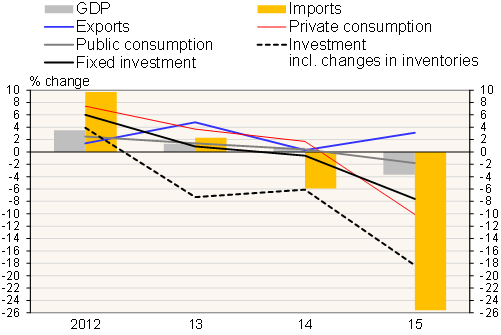BOFIT Weekly Review 06/2016
New calculation of statistics increases size of Russian economy
Applying international accounting standards of 1993 and 2008 for calculating GDP, Rosstat has adjusted Russia’s 2014 GDP measured in rubles up by 9 %. The GDP figures for 2011–2013 were also raised by about 7 %. Russian 2015 GDP under the new approach is estimated at around 80.4 trillion rubles. 2015 GDP measured in euros (1,190 billion) or dollars (1,320 billion) showed a decline, however, due to the ruble’s fall. GDP per capita in 2015 was just over €8,000 (€10,500 in 2014).
The new GDP figures include estimates of gains from living in one’s own home, labour employed by households, capital consumption based on the market value of capital, as well as revised estimates of grey wages. The reassessed GDP 2014 data also provide wider coverage of R&D activity and defence spending.
While the biggest upward impact to the new 2014 GDP estimate came from a revised private consumption figure, the largest relative increase occurred in the value of fixed capital investment. Fixed investment accounted for over 21 % of GDP in 2014 and 22 % in 2015. On the supply side, the real estate branch’s added-value had the largest impact as it soared by 50 %. State administration and defence sector lumped together were also up 45 %.
Real GDP growth figures for 2012–2014 only changed slightly. On the other hand, practically all GDP categories (consumption, fixed investment, exports and imports, as well as production branches) saw adjustments of growth rates to a varying degree. It is unclear whether inclusion of Crimea data impacted the 2014 growth figures. Crimea accounts for about half of a per cent of Russian GDP.
Changes in supply and demand components 2012–2015

Source: Rosstat.